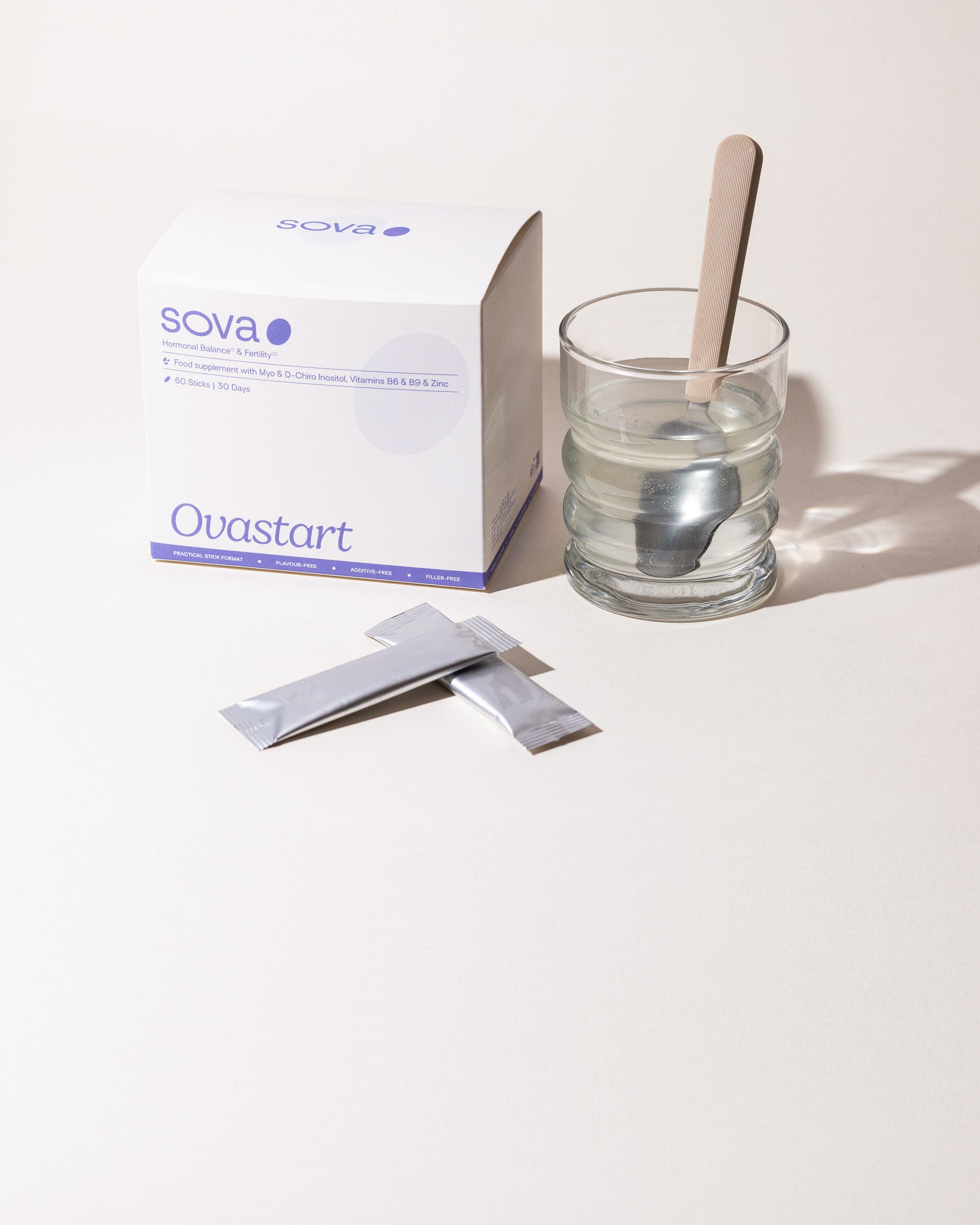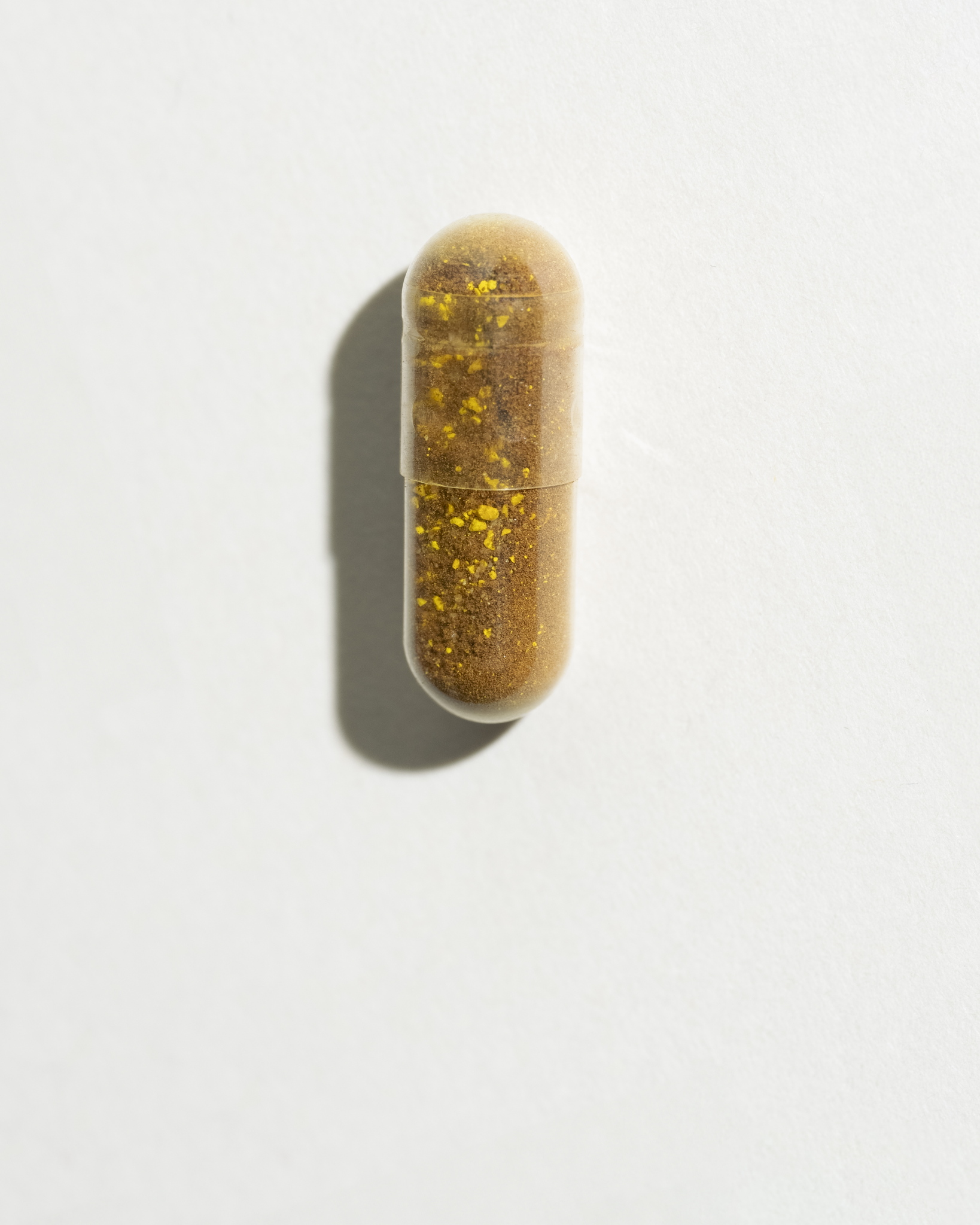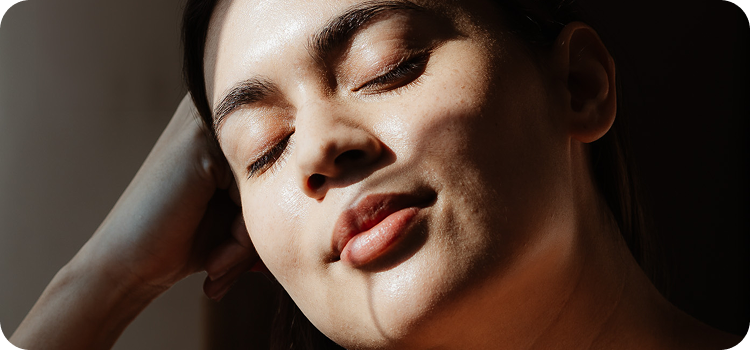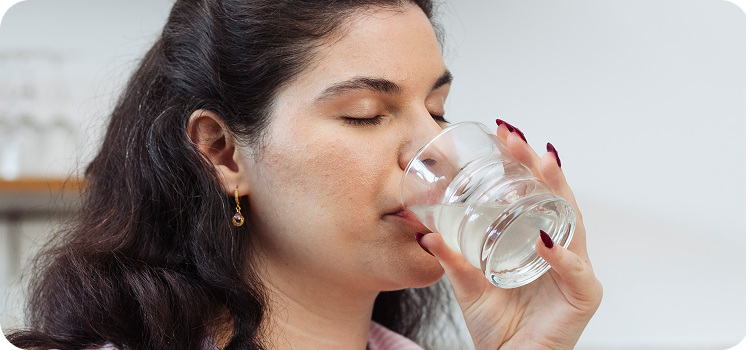Table of contents
You might be wondering which sport to practice to better manage your PCOS. You've likely heard that excessive exercise can be harmful, but that moderate, regular movement is beneficial. And you might also be unsure about when to eat—before or after exercise?
In this article, we'll guide you through all this information, help you better understand how to move your body with PCOS, and recommend the best activities based on your needs.
We also recommend taking our product quiz to receive personalised supplement advice based on your symptoms. It’s a great way to know if Ovastart, Sugar Balance or our Balance Bundle can support your hormonal balance while you become more active.
Physical activity vs. sports: what's the difference?
Regular exercise is essential for everyone. Many studies have shown that exercise increases both quality and length of life. Even Hippocrates, the ancient Greek physician, prescribed physical activity to improve his patients' health.
So, without further ado, there you go, physical activity is good for your PCOS!
The WHO —World Health Organization— defines physical activity as "any bodily movement produced by skeletal muscles that requires energy expenditure". This includes all movements during leisure, work, or transportation. Moderate to vigorous physical activity has beneficial health effects.
And what about sports? According to the Cambridge Online Dictionary, a sport is "a game, competition, or activity needing physical effort and skill that is played or done according to rules, for enjoyment and/or as a job". It often takes more time to practice than just any physical activity, and is taken on for specific health, play, or competition purposes, depending on the individual.
In this article, we will be talking about physical activity in general.
Official Recommendations
The WHO provides a summary of recommendations for each age group regarding physical activity! It’s a great way to keep an eye on your health over the years. These recommendations also apply to women with PCOS.
For healthy individuals aged 18 to 64, it is recommended to practice:
- 150 to 300 minutes per week of moderate-intensity endurance activity;
- Or at least 75 to 150 minutes of vigorous-intensity endurance activity;
- Or, ideally, an equivalent combination of moderate and vigorous-intensity activities throughout the week.
- Additionally, muscle-strengthening activities involving major muscle groups should be done at least twice a week.
Good news: A study showed that at least 150 minutes (or 2.5 hours) per week of varied intensity exercise significantly improves PCOS symptoms!
Don't worry if you're currently far from it, the idea is to gradually incorporate it into your daily routine to preserve your health!
Benefits of exercise for PCOS
Exercising is essential to lessen some of the symptoms of PCOS. Indeed, exercise is a way to better manage PCOS daily.
- Regular exercise promotes the return of regular cycles.
- Exercise also improves insulin sensitivity by reducing chronic low-grade inflammation.
- Several studies have shown that some physical activities reduces levels of CRP and IL6 (cardiovascular risks).
Here are some simple examples of daily activities:
- Daily walking (more than 1000 steps a day).
- Daily yoga practice.
- HIIT sessions.
With more than 70% of women with PCOS experiencing insulin resistance, daily movement is a core pillar of your hormonal health. Want to go deeper on this? Read our article on insulin resistance and PCOS.
When practiced regularly, exercise lowers the risk of developing cardiovascular diseases, which become more significant at menopause.
It also reduces stress and anxiety, and as you probably know, PCOS can bring its share of worries… Thus, it helps reduce the risk of developing mental health issues. We will explain all this in more detail later.
The key to reaping all these benefits is to vary the intensities!
Different exercise intensities
Different activities require different physical efforts which, in turn, also depend on the individual's physical condition, training, and breathing capacity. Ideally, vary these activities throughout the week to take care of your health!
Light-intensity activities are done easily, without shortness of breath. The heart rate increases slightly but remains well below the maximum heart rate, for at least 45 minutes.
- Examples: Slow walking (4 km/h), playing frisbee, table tennis (non-competitive), golf, bowling, daily activities like DIY, housework, etc.
Moderate-intensity physical activities (at least 30 minutes) increase heart rate slightly more, with mild shortness of breath. You can talk easily during this effort.
- Examples: Brisk walking (5-6 km/h), hiking, cycling, dancing (e.g., ballroom dancing), non-performance-oriented weight training, water aerobics, alpine skiing, etc.
High-intensity activities increase respiratory rate and heart rate significantly. They should last for at least 20 minutes.
- Examples: Running, brisk walking (over 6.5 km/h), cycling (over 20 km/h), athletics, fast swimming, competitive sports like volleyball, football, rugby, basketball, hockey, tennis, squash, combat sports, HIIT, etc.

Impact on hormones
Testosterone
There are many conflicting opinions on this topic. A study showed that outside of intense competition training, exercise does not disturb testosterone levels (testosterone levels). During moderate-intensity exercise, testosterone normally increases by 40 to 50%, but returns to normal 4 to 6 hours after the session.
Don’t worry! This is entirely normal. Its production is natural. It increases to protect muscle tissues damaged by physical exercise. Testosterone stimulates the absorption of amino acids, necessary for protein synthesis. It acts on muscle mass building (that's why some athletes supplement with testosterone), and its level decreases a few hours after exercise. With moderate exercise, it does not impact hyperandrogenism, hirsutism, and alopecia.
Remember, exercise even promotes hormonal balance when practiced moderately.
Some studies show that testosterone tend to increase more during the follicular phase, just before the natural testosterone peak at ovulation in an ovulatory cycle.
During intense exercise, the circulating testosterone level in the blood increases up to +195%. The FSH level does not change, but LH decreases by up to 30%. This LH level is usually too high with PCOS (blocking ovulation). Testosterone levels return to normal 6 to 12 hours after training.
It also appears that testosterone levels increase slightly over time with repeated less intense but very prolonged exercise, such as competitive swimming.
Key points to remember:
- In most cases, physical activity does not increase testosterone levels in the long term. So, it is not a restriction to practicing sports with PCOS. In fact, it even promotes overall hormonal balance!
- Fun fact: 5 nmol/L is the testosterone level in the blood that a female athlete must not exceed to compete in major competitions in the female category!
Cortisol
Known as the stress hormone, cortisol helps the body adapt to physical and environmental stress. During exercise, it allows the body to physically adapt to effort. Cortisol increases during exercise and significantly decreases afterward. This is why the anti-stress effects of exercise are often highlighted. It is essential for good physical and emotional balance.
As with everything, balance is key. Excessive cortisol due to overtraining can have harmful effects on the body . Defined as “a reduction in performance and a persistent state of chronic fatigue lasting several months despite prolonged recovery,” this typically affects high-level athletes or those practicing very intense and repetitive physical activity with insufficient training.
Over time, it disrupts the body's acid-base balance, favoring chronic low-grade inflammation, a common condition in women with PCOS. Another study showed that an acid-base imbalance impacts cortisol production and increases the risk of insulin resistance. Since 70% of women with PCOS face this issue, overtraining is not recommended for PCOS. If you experience symptoms, consider seeing a naturopath specialized in sports to restore balance.
High cortisol levels also impact progesterone production and further disrupt menstrual cycle regularity in PCOS.
However, it’s often stated on social media that “intensive sports” are bad for PCOS. What do we mean by intensive sports? It depends on you! For instance, if you are not very athletic and suddenly decide to train hard for a marathon within a month, it could disrupt your body. But if you prepare gradually over a year, adapting your diet (see recommendations below), and paying close attention to your sleep, you significantly reduce your risk of overtraining.
Adapting your lifestyle to your sports practice is key. You can be very athletic with PCOS if you follow the basic recommendations! What we do not recommend is a sudden increase in your sports practice without combining it with specific nutritional inputs (like the infamous 1.5 hours of elliptical every day after New Year's, while on a very low-calorie diet… exactly what not to do!).
If you want to practice a sport on a more intensive basis, it is important to have the right routine to protect your body:
- Try to avoid “acidifying” diets to prevent acid-base imbalance. Ideally, include regular fruits and vegetables, whole grains, quality animal and plant protein sources.
- Cut down refined sugars, saturated fats, excess red meat, and stimulants (coffee, alcohol, tobacco).
- Intensive sport practice can have adverse effects on the gut microbiota. If you have gut sensitivity, consider regular prebiotic intake (fermented vegetables, kefir, kombucha, etc.) and probiotics, if necessary.
- Taking the amino acid Glutamine, is very beneficial when sports practice causes gut issues. It repairs the digestive mucosa by strengthening epithelial cells (intestinal cells). Healthy intestines contribute to hormonal balance, which is essential!
- Sufficient rest between sessions significantly reduces the prolonged increase in hormones like cortisol.
- Regular magnesium bisglycinate supplementation (magnesium is used in greater quantities by the body during physical or emotional stress).
- Increase your antioxidant intake through diet.
- Consult a naturopath or dietitian/nutritionist to adapt your diet if needed!
So, what is the ideal sport for PCOS?
The best sport is the one you love and stick to. Seriously.
|
Kung-Fu |
Soccer |
|
Badminton |
Running |
|
Pilates |
Climbing |
|
Aikido |
Horse Riding |
|
Weight Training |
Yoga |
|
Swimming |
Volleyball |
|
Basketball |
Dance |
|
Fencing |
Skiing |
|
Figure Skating |
Cycling |
|
Hiking |
Tennis |
|
Gymnastics |
Karate |
|
Judo |
And many more… Briefly said, choose one you enjoy and makes you feel good. The particular sport you choose doesn’t matter since they all have health and PCOS benefits. Below, we give you details of three sports that are adaptable to different physical conditions and habits.

Benefits of HIIT for PCOS
A study showed the beneficial effects of twelve weeks of high-intensity interval training (HIIT) on PCOS.
It shows that this practice improves aerobic capacity, insulin sensitivity, menstrual cyclicity, and an increased reduction of hyperandrogenism compared to MICT (moderate-intensity continuous training). This type of training is effective as both a cardiovascular and muscle workout.
By pushing the body to its limits, we force it to quickly tap into its reserves. Generally, depending on the chosen sport (running, cycling, swimming, etc.), a session lasts 20 minutes with a sequence of 20 seconds of intense practice and ten seconds of rest.
Ideally, you should already have some sports experience before starting HIIT to ensure you do it safely.
Benefits of daily walking for PCOS
PCOS often affects the weight of women while some develop obesity, making sports practice less comfortable and accessible.
A study showed that, alongside a suitable diet, walking more than 1000 steps a day has real effects on chronic inflammation.
Moreover, walking reduces IL6 and CRP levels (inflammation markers). When a person walks more than 1000 steps a day, these markers decrease by 13%, reducing the risk of type 2 diabetes and cardiovascular diseases.
Finally, this 13% reduction can be further improved by increasing your daily step count.
Another underrated benefit is the very positive impact of walking in nature. The Japanese term “Shinrin-Yoku,” meaning “forest bathing,” has become a therapeutic approach. It lowers cortisol levels and calms negative emotions like anger, sadness, or anxiety.
Another study showed that regular 4-hour walks on weekends improve cardiovascular health and actively prevent metabolic syndrome and insulin resistance.

Benefits of yoga for PCOS
Over the past decade, many studies have explored the benefits of Yoga on PCOS. One such study by Iranian researchers showed that six weeks of daily Yoga practice resulted in a significant reduction in hirsutism, abdominal waist size, and hip circumference. A meta-analysis of studies on Yoga and PCOS showed that Yoga has a slight influence on insulin sensitivity, thus improving insulin resistance cases.
Managing PCOS symptoms to be able to exercise
It can sometimes be difficult to practice a sport when you are living with daily symptoms. What is presented as health information can feel like a real command, especially for those who have been told to lose weight to alleviate PCOS symptoms. We completely understand!
If you don't feel comfortable in your body, are tired, maybe overweight, or have no endurance because sports and you just don't get along, here are some tips:
- Take the time to integrate gentle physical activities into your daily routine (replace the car with a bike, get off a few subway stations before your destination, take the stairs instead of the elevator, etc.).
- Work on balancing your hormones and fatigue with a diet suited to your PCOS and appropriate supplements. Ovastart is designed to support a healthy hormonal balance and will prop up your efforts to resume a sporting activity when you have PCOS. It contains 100% of the daily recommended intake of zinc, essential for muscle recovery, and vitamin B9, useful for reducing fatigue.
- Take the time to try different sports that poke your interest through trial classes, discussing any potential physical pain with the coach beforehand so they can adapt to you!
- Find an outfit that makes you feel comfortable! The latest legging/bra combo isn’t essential for sports. The main thing is that you feel good and comfortable. Choosing the right sports shoes for your activity is crucial. If needed, consult a podiatrist to find the right fit and start your sports practice with confidence.
- Schedule your workout times in your agenda. This is the best way to stick to it! Even if it’s cycling into town for shopping, it’s a workout!
- The keyword is progression: if you’re new to running, start with 10-minute sessions, then 15 minutes, then 25 minutes, then 30 minutes, etc. The idea is to avoid injury and let your motivation grow with each session!
- Remember to warm up before your session to minimize injury risk and stretch afterward to avoid soreness and muscle tension.
If you experience pain related to your PCOS that could affect your practice, consider consulting a healthcare professional.
Pre-exercise hygiene
- Take the time to eat before your session with a low-GI breakfast if you exercise in the morning.
- Stay away from heavy meals before exercising to avoid digestive discomfort.
- Stay well-hydrated with quality water—between 1.5 and 2L per day. Avoid sugary drinks and alcohol around and during exercise.
- During exercise, drink small amounts of water regularly. Don’t make it too cold to avoid disturbing your digestion.
Post-exercise routine
- Hydrate properly to prevent cramps.
- Take time to stretch to maintain muscle flexibility. Always stretch gently to avoid injury.
- The best? Taking a nice hot bath with a few drops of True Lavender essential oil for relaxation.
- Consider massaging yourself with a warming essential oil like Camphor Rosemary or Wintergreen diluted in a carrier oil (you can even massage yourself before exercise to prepare your muscles!).
- When using essential oils for massage, ensure your checked for any contraindications (asthma, allergies, epilepsy, pregnancy, breastfeeding, etc.) beforehand.
Nutrition for athletes
Of course, nutrition varies based on physical activity! Here are some general rules to individualize according to your needs:
- Provide all essential nutrients through a diversified diet and focus on healthy, organic, and seasonal products.
- Low-GI carbohydrates are important to avoid hypoglycemia. Whole grains, legumes, and whole wheat pasta are great allies.
- Proteins are essential for muscle tissue development. If your practice is less intense, you don’t need to eat too much of them. Ensure they are high quality for good assimilation: organic eggs, white meat, fish, legumes, cereals like quinoa or buckwheat, etc.
- Fruits and vegetables are crucial for supporting intestinal transit through fibers. They also provide essential vitamins and minerals for energy and fight against body acidification caused by intense exercise through high antioxidant content.
Micronutrition boost
- Magnesium is an athlete's friend! Did you know it contributes to over 300 functions in the body? It promotes good muscle recovery, proper oxygenation, and reduces lactic acid levels that cause soreness.
- Zinc + B9: found in Ovastart for energy, ovulation & hormone support
-
Balance Bundle: your full-body hormonal support for active women with PCOS
Feel free to supplement if needed! Take our quiz to see which product is best for you.
Finding the right balance
Exercise holds many virtues that will help you fight against PCOS. Each sport can help improve your symptoms. Ultimately, the most important thing is to choose a sport you enjoy and can see yourself practicing regularly! You now understand that there is no “bad” sport for your PCOS. The benefits of sport lie in finding a balance. The most important thing is to enjoy yourself. ❤️
Little by little, you will see improvements in insulin resistance, weight, hyperandrogenism, mood, and emotions!
And tell us in the comments: what sport makes YOU feel good with PCOS?
- Insulin resistance: A common PCOS feature where cells respond poorly to insulin. Movement helps improve this, especially strength training and regular low-impact activity. = Insulin resistance: A common PCOS feature where cells respond poorly to insulin. Movement helps improve this, especially strength training and regular low-impact activity.
- Cortisol: The body’s main stress hormone. High or chronic cortisol can disrupt periods and worsen PCOS symptoms. Overtraining can increase it. = Cortisol: The body’s main stress hormone. High or chronic cortisol can disrupt periods and worsen PCOS symptoms. Overtraining can increase it.
- Low-impact exercise: Gentle movement that doesn’t overly stress joints or the nervous system (walking, cycling, yoga, Pilates). = Low-impact exercise: Gentle movement that doesn’t overly stress joints or the nervous system (walking, cycling, yoga, Pilates).
- HIIT (High-Intensity Interval Training): Short, intense intervals followed by rest. Effective for some women, but too much can increase stress hormones if energy levels are low. = HIIT (High-Intensity Interval Training): Short, intense intervals followed by rest. Effective for some women, but too much can increase stress hormones if energy levels are low.
- Strength training: Workouts using weights or bodyweight to build muscle. Highly recommended for PCOS because muscle improves insulin sensitivity and metabolism. = Strength training: Workouts using weights or bodyweight to build muscle. Highly recommended for PCOS because muscle improves insulin sensitivity and metabolism.
- Inflammation: A chronic “internal stress” that many women with PCOS experience. The right type of movement helps decrease it. = Inflammation: A chronic “internal stress” that many women with PCOS experience. The right type of movement helps decrease it.
Scientific references
SOVA was created by two sisters with PCOS who wanted products that truly worked. Our formulas are developed in-house with women’s health and micronutrition experts, using ingredients backed by clinical studies and compliant with European regulations.
- Built by women with PCOS, we know the reality of the symptoms.
- Clinically studied, high-quality ingredients, including patented forms like Quatrefolic® and an optimal Myo-/D-Chiro Inositol ratio.
- Holistic support for hormonal balance, metabolic health, inflammation, mood and cycle regulation.
- Transparent, science-led formulas with no unnecessary additives.

















